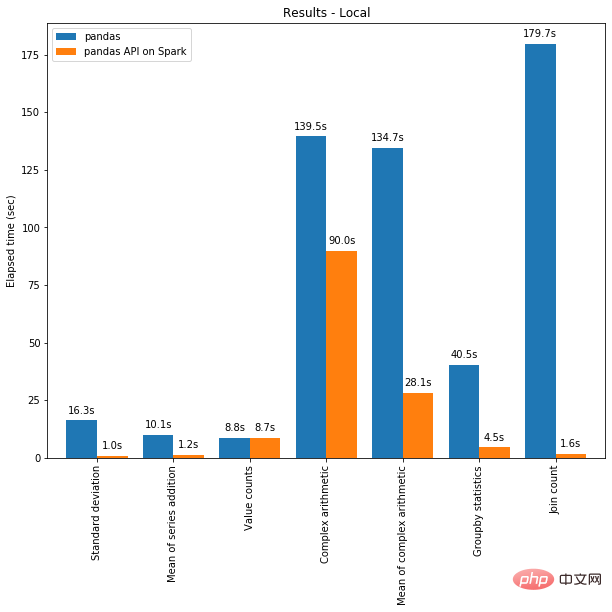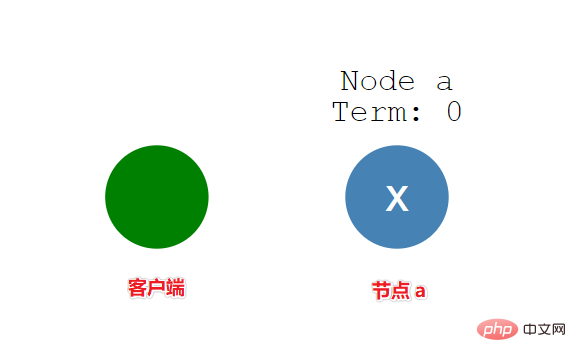Redis is a high-performance memory database that is widely used in distributed systems. It provides rich data structures and powerful caching capabilities, and can support a variety of application scenarios, such as caching, real-time computing, queues, etc. In distributed data processing, Redis's data sharding and Replication mechanism make it a common data storage solution. However, there are also some problems in the distributed deployment and data processing of Redis, which need to be fully considered and dealt with during testing and debugging.
1. Distributed deployment and data processing of Redis
Redis supports multiple distributed modes, such as Master-Slave replication, Sentinel automatic failover and Cluster sharding cluster. In the distributed deployment mode, the Master node is responsible for data modification and writing, the Slave node is responsible for data backup and reading, and the Sentinel node is responsible for monitoring node status and coordinating failover. Each node in the Cluster cluster has a Master-Slave replication relationship. It has the advantages of high availability and horizontal scalability.
In terms of data processing, Redis provides efficient batch processing and complex computing capabilities through Pipeline and Lua scripts, and supports a variety of data structure operations, such as strings, lists, hashes, sets, and ordered Collection etc. However, in a distributed environment, the performance and consistency of data processing may be affected to a certain extent, and the following issues need to be considered:
- Distributed data consistency
In Redis's Master-Slave replication and Cluster sharding cluster, data replication and synchronization may be delayed and lost, resulting in data inconsistency on different nodes. In order to ensure data consistency, you need to use Redis's own transaction and watch mechanisms when modifying data, or use third-party distributed locks and consistency algorithms and other technologies.
- Distributed data processing performance
Redis's Pipeline and Lua scripts can improve the efficiency of data processing. However, there are many problems in load balancing, inter-node communication and data splitting. Grading aspects also affect performance and scalability. In order to maximize the utilization of resources, optimization operations such as load balancing between nodes, data warm-up and performance testing are required, and application-level caching and optimization will be more beneficial to improving performance.
2. Redis testing and debugging strategy
In the distributed deployment and data processing of Redis, testing and debugging are very important links. The following is the testing and debugging strategy of Redis:
- Unit testing
The data structures and operating functions in Redis are very rich. In order to ensure the correctness and stability of the code, Each function needs to be unit tested. These tests include consideration of parameters and boundary values, such as input string length and data type discrimination. Common testing frameworks for unit testing such as Junit, pytest, etc. can be used to test every function and module in Redis.
- Integration testing
For Redis in a distributed environment, integration testing is required to verify its distributed capabilities and characteristics. These tests should include inter-node communication, data synchronization and consistency testing. For example, you can build a test environment to simulate a distributed system, including multiple Redis nodes, client requests, network transmission, etc. Test integration tests to measure whether Redis meets scenario data requirements, such as traffic, concurrency, and capacity.
- Performance Test
Data processing and storage in Redis are very low-level, so performance testing is required to fully understand the performance characteristics of Redis. Performance testing can simulate possible user scenarios, concurrent loads, data scale, etc., and evaluate Redis's performance indicators such as throughput and response time by testing different parameters (such as the number of concurrencies, data volume, number of instances, and access types).
- Monitoring and log analysis
In test and formal environments, Redis monitoring and log analysis are required to quickly locate performance and fault issues. Redis has built-in monitoring tools redis-cli and Redis monitoring panel RedisInsight, which can be used to view Redis internal status, client requests, inter-node communication and other information in real time. At the same time, you can also use log file analysis tools (such as ELK Stack) to collect and analyze Redis logs to understand anomalies and performance issues and further optimize the Redis configuration.
Conclusion
Redis is a popular open source in-memory database that provides rich data structures and distributed deployment modes and is suitable for a variety of application scenarios. In a distributed environment, Redis's data synchronization and consistency issues require special attention. To address these problems, we can adopt some testing and debugging strategies, including unit testing, integration testing, performance testing and monitoring, and log analysis, to optimize the performance and stability of Redis and provide efficient and reliable support for distributed data processing.
The above is the detailed content of Redis testing and debugging strategies for distributed data processing. For more information, please follow other related articles on the PHP Chinese website!
 PHP实现开源SeaweedFS分布式文件系统Jun 18, 2023 pm 03:56 PM
PHP实现开源SeaweedFS分布式文件系统Jun 18, 2023 pm 03:56 PM在分布式系统的架构中,文件管理和存储是非常重要的一部分。然而,传统的文件系统在应对大规模的文件存储和管理时遇到了一些问题。为了解决这些问题,SeaweedFS分布式文件系统被开发出来。在本文中,我们将介绍如何使用PHP来实现开源SeaweedFS分布式文件系统。什么是SeaweedFS?SeaweedFS是一个开源的分布式文件系统,它用于解决大规模文件存储和
 Pandas 与 PySpark 强强联手,功能与速度齐飞!May 01, 2023 pm 09:19 PM
Pandas 与 PySpark 强强联手,功能与速度齐飞!May 01, 2023 pm 09:19 PM使用Python做数据处理的数据科学家或数据从业者,对数据科学包pandas并不陌生,也不乏像云朵君一样的pandas重度使用者,项目开始写的第一行代码,大多是importpandasaspd。pandas做数据处理可以说是yyds!而他的缺点也是非常明显,pandas只能单机处理,它不能随数据量线性伸缩。例如,如果pandas试图读取的数据集大于一台机器的可用内存,则会因内存不足而失败。另外pandas在处理大型数据方面非常慢,虽然有像Dask或Vaex等其他库来优化提升数
 PHP中的分布式数据中心May 23, 2023 pm 11:40 PM
PHP中的分布式数据中心May 23, 2023 pm 11:40 PM随着互联网的快速发展,网站的访问量也在不断增长。为了满足这一需求,我们需要构建高可用性的系统。分布式数据中心就是这样一个系统,它将各个数据中心的负载分散到不同的服务器上,增加系统的稳定性和可扩展性。在PHP开发中,我们也可以通过一些技术实现分布式数据中心。分布式缓存分布式缓存是互联网分布式应用中最常用的技术之一。它将数据缓存在多个节点上,提高数据的访问速度和
 使用Redis实现分布式计数器May 11, 2023 am 08:06 AM
使用Redis实现分布式计数器May 11, 2023 am 08:06 AM什么是分布式计数器?在分布式系统中,多个节点之间需要对共同的状态进行更新和读取,而计数器是其中一种应用最广泛的状态之一。通俗地讲,计数器就是一个变量,每次被访问时其值就会加1或减1,用于跟踪某个系统进展的指标。而分布式计数器则指的是在分布式环境下对计数器进行操作和管理。为什么要使用Redis实现分布式计数器?随着分布式计算的普及,分布式系统中的许多细节问题也
 分布式系统必须知道的一个共识算法:RaftApr 07, 2023 pm 05:54 PM
分布式系统必须知道的一个共识算法:RaftApr 07, 2023 pm 05:54 PM一、Raft 概述Raft 算法是分布式系统开发首选的共识算法。比如现在流行 Etcd、Consul。如果掌握了这个算法,就可以较容易地处理绝大部分场景的容错和一致性需求。比如分布式配置系统、分布式 NoSQL 存储等等,轻松突破系统的单机限制。Raft 算法是通过一切以领导者为准的方式,实现一系列值的共识和各节点日志的一致。二、Raft 角色2.1 角色跟随者(Follower):普通群众,默默接收和来自领导者的消息,当领导者心跳信息超时的
 Redis实现分布式配置管理的方法与应用实例May 11, 2023 pm 04:22 PM
Redis实现分布式配置管理的方法与应用实例May 11, 2023 pm 04:22 PMRedis实现分布式配置管理的方法与应用实例随着业务的发展,配置管理对于一个系统而言变得越来越重要。一些通用的应用配置(如数据库连接信息,缓存配置等),以及一些需要动态控制的开关配置,都需要进行统一管理和更新。在传统架构中,通常是通过在每台服务器上通过单独的配置文件进行管理,但这种方式会导致配置文件的管理和同步变得十分复杂。因此,在分布式架构下,采用一个可靠
 Redis实现分布式对象存储的方法与应用实例May 10, 2023 pm 08:48 PM
Redis实现分布式对象存储的方法与应用实例May 10, 2023 pm 08:48 PMRedis实现分布式对象存储的方法与应用实例随着互联网的快速发展和数据量的快速增长,传统的单机存储已经无法满足业务的需求,因此分布式存储成为了当前业界的热门话题。Redis是一个高性能的键值对数据库,它不仅支持丰富的数据结构,而且支持分布式存储,因此具有极高的应用价值。本文将介绍Redis实现分布式对象存储的方法,并结合应用实例进行说明。一、Redis实现分
 PHP与数据库分布式的集成May 15, 2023 pm 09:40 PM
PHP与数据库分布式的集成May 15, 2023 pm 09:40 PM随着互联网技术的发展,对于一个网络应用而言,对数据库的操作非常频繁。特别是对于动态网站,甚至有可能出现每秒数百次的数据库请求,当数据库处理能力不能满足需求时,我们可以考虑使用数据库分布式。而分布式数据库的实现离不开与编程语言的集成。PHP作为一门非常流行的编程语言,具有较好的适用性和灵活性,这篇文章将着重介绍PHP与数据库分布式集成的实践。分布式的概念分布式


Hot AI Tools

Undresser.AI Undress
AI-powered app for creating realistic nude photos

AI Clothes Remover
Online AI tool for removing clothes from photos.

Undress AI Tool
Undress images for free

Clothoff.io
AI clothes remover

AI Hentai Generator
Generate AI Hentai for free.

Hot Article

Hot Tools

ZendStudio 13.5.1 Mac
Powerful PHP integrated development environment

MinGW - Minimalist GNU for Windows
This project is in the process of being migrated to osdn.net/projects/mingw, you can continue to follow us there. MinGW: A native Windows port of the GNU Compiler Collection (GCC), freely distributable import libraries and header files for building native Windows applications; includes extensions to the MSVC runtime to support C99 functionality. All MinGW software can run on 64-bit Windows platforms.

Notepad++7.3.1
Easy-to-use and free code editor

VSCode Windows 64-bit Download
A free and powerful IDE editor launched by Microsoft

SAP NetWeaver Server Adapter for Eclipse
Integrate Eclipse with SAP NetWeaver application server.





